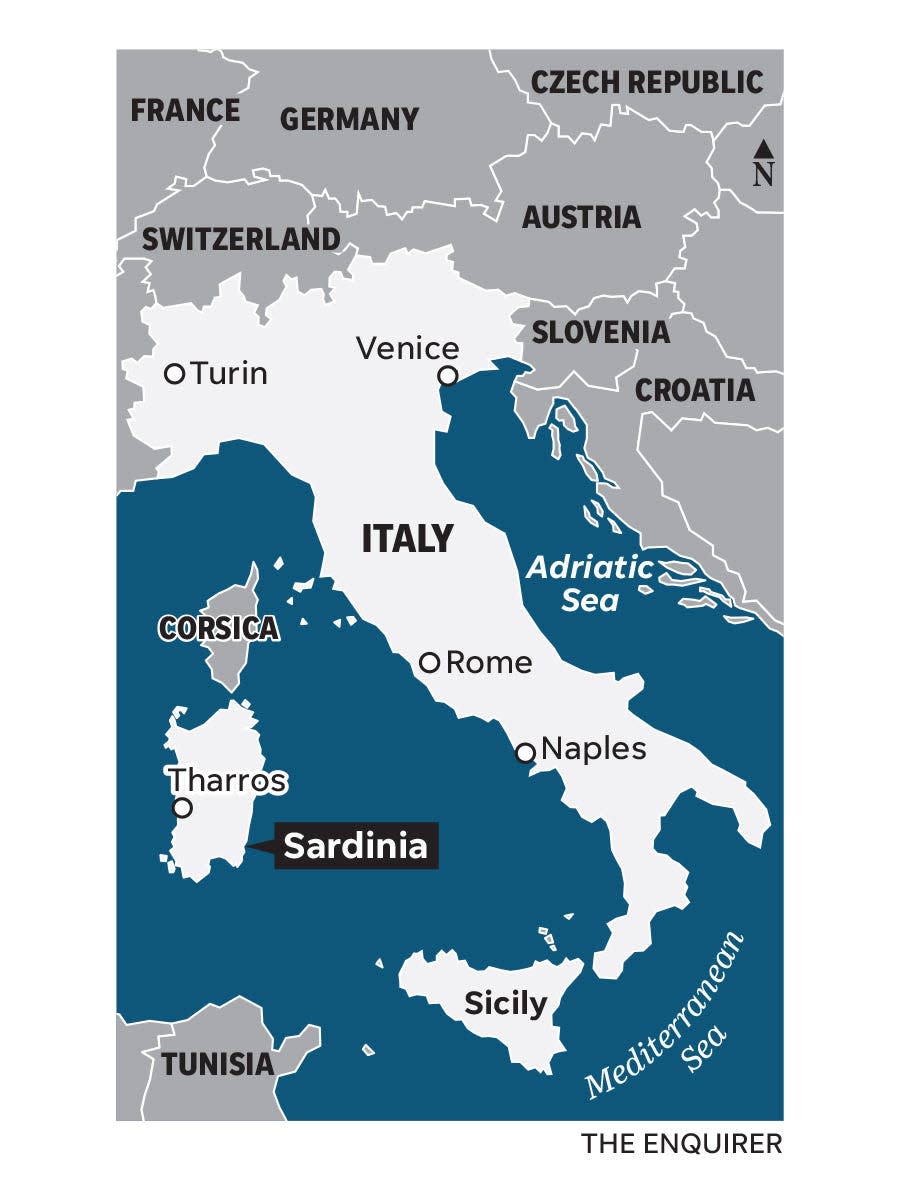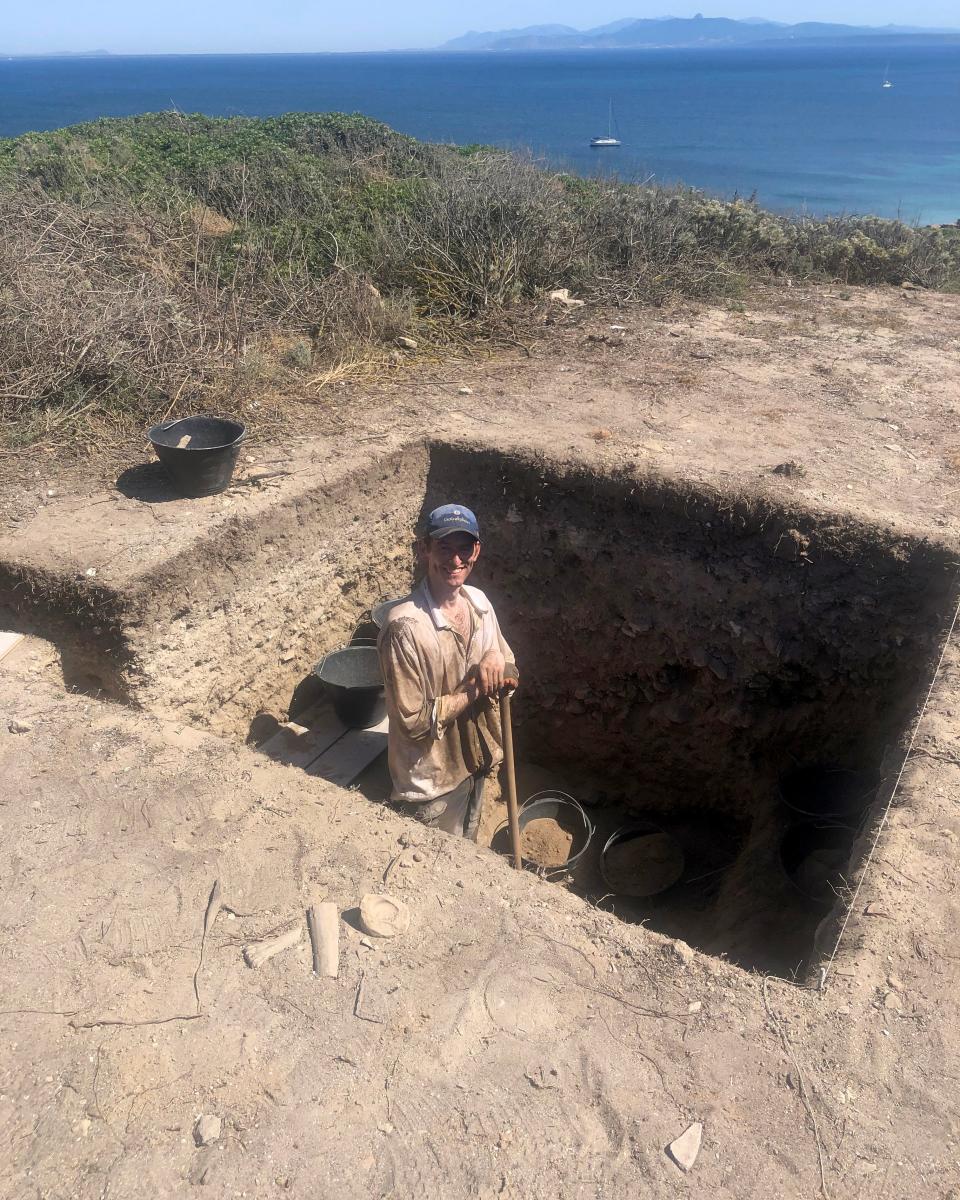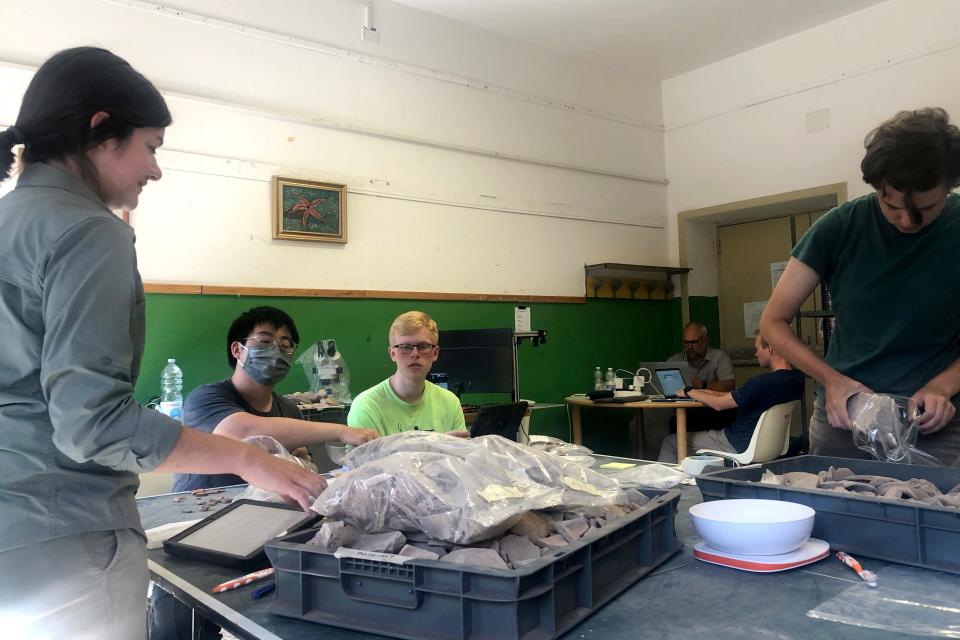In Italy this summer, UC students uncover ancient city on archaeology dig

THE SANDS OF SARDINIA, Italy – In the bright-blue Mediterranean Sea, sitting just west of the better part of Italy is an island on which falls golden-yellow rays of luminous sunshine.
A young man is not paying the sun much mind, however. He digs. Sweat soaks his hair, sticking it to his body. His shoulders ache and he continues to dig, looking up only when Steven Ellis, the current boss on this island, hollers down some instructions.
Ellis, an associate professor of classics at the University of Cincinnati, is the director of the Tharros project, a multi-year dig at this town of the same name located on the island's west coast.
Ellis hopes the project will help him understand how ancient Roman cities grew over time. He is working to uncover Tharros all the way, from its founding to its abandonment.

This is something no one has done before.
Ellis is no novice. He also leads a project at Pompeii, now in its finishing stages.
But he also has help in Tharros. With him are roughly 25 workers at a time including archaeologists, graduate and undergraduate students, a handful of them from UC.
For the latter, the summer of '22 will be remembered as the one they spent on the Sardinian coast, with their heads and hearts in the ground, looking back in time.
All, even the dirty and tired, are thrilled to be there.
Who wouldn’t be? It’s Italy. Paradise.
Yet, for the archaeologists and those who aspire to be, the real paradise exists below the soil, where answers about civilization roughly 3,000 years ago wait to be discovered.
The search for the ancient city of Tharros
Patrick Hayes, the 24-year-old University of Cambridge doctoral student in the trench, is busy looking for an ancient floor. He works at the top of a hill with a few other students. At the base of the hill is the rest of the crew. Both sections are alive with those working with tiny trowels or heavy earth-moving shovels.
The floor Hayes is looking for is something the experts thought would have shown up already. A lot of scientific equipment and calculation went into deciding to dig here.
But it hasn’t shown itself. Not yet, anyway.

This is what archaeology is now. A lot of prep and a few wonder machines that can see below ground and, thus, limit some guessing. But it's also, still, a lot of painstaking, time-consuming work removing soil that, well, can only be removed once. The job is, when you find things, to unlock what they tell you.
And also, if there is a lot of not finding, what that says as well.
When workers here have time to look up from the ground, they see the water just over the cliff, near enough to run to for a swim, and close enough to smell the salt air, to know that this place has always been where people would come to live, and to trade, and to embrace the splendor of the natural world.
Behind them, a short drive away, is an old school where 10 people now analyze what those ancient people brought with them or created here and that now has been unearthed: ancient tiles, Roman pottery pieces, archaic charcoal and seashells. They are, as the academics want to say, "collecting data points" that seem to come from all of it.
Tianqi Zhu, Matt Wabler and Anna Wire stand at the lab table in the school and inspect pieces of pottery. They await more goodies from the site to scrutinize. Every pile holds a promise.
People dig. People haul the things they've unearthed. Other people examine, sort, categorize, file. All day long. Dig. Haul. Sort.

They've come from all over to do this hard work. Twenty-six-year-old Zhu, a native of Nanjing, China, is in his third year of graduate school at UC. Matt Wabler, 20, is from Anderson Township. Anna Wire, 22, hails from Colorado but goes to school at Pomono College in California. And Patrick Hayes, the trench warrior, calls Limerick, Ireland home.
When the late-afternoon sun gets ready to set, their work day ends.
The moments of discovery
Archaeology means starting early. Ask Hayes or Beth Minney or Callie Todhunter or Max Peers. With only five weeks digging at the site each summer, everybody wants to get the most out of every day.
So they are all back on site pretty early the next morning. The sun is behind the dig. The air is not yet dry as it will be later. The clouds of gnats though have already returned for another day of feasting on college students.
And there is still belief, among the students and the pros, that they are very near to finding the floor. There is even talk about a tell-tale drain that should be showing up as well.
Hope is high.

But there is disappointing news soon enough. No drain had been found in what is known as Trench 5000, as some had expected. No floor had been uncovered in Trench 6000.
There's a quick halt to reassess a few things, a few moments of reflection. But the team members aren't really dissuaded. They know what they are here to do, and they are just going to keep doing it.
Soon enough, people are back at work. RJ Maupin, 22 and a recent graduate of Elon University, takes drone photos. Cinzia Presti, 24 and UC graduate student, hauls out the fancy technology stuff to track what the team is digging up.
The heat beats down. Deep dehydration starts to set in. All anyone tastes is sunscreen.
Paradise? Hmm. Maybe lost for now.
But, mid-afternoon, a yell goes up.
“A coin! We found a coin!”
Looking back in time
People stop what they are doing to come see.
Paula Gaither, a 27-year-old doctoral student from Stanford University, takes to the dirt with a brush, similar looking to a miniature broom, and gently wipes away the dust. Lizzy Hallett, 31 and from Madisonville, picks the coin up. It's nothing like the fresh copper pennies in American pockets, but the circular shape is unmistakable.
Excitement surges through the team. The coin is small, but the answers it could provide are immeasurable.

Sometimes careful inspection can find a name associated with the coin, a real person who lived and minted it. If it’s from a different country, it could be indicative of trade. Maybe, if you’re lucky, a coin can give you a date.
Lucky? Yes, because if you have a date for this coin, Ellis and others can determine that all the structures found above where that coin was found – that is, built upon it – must be younger than the coin.
And if you can date these big structures, you can begin to understand the development of the ancient city over time.
People pass the coin around. Guesses of what the design is on the coin shoot off like fireworks. Loud and constant.
“It looks like a lady with their legs crossed,” one person shouts.
“Or maybe a lady dancing.”
“You see that curve, that kind of looks like an ‘S.’”
It's actually a horse, Ellis later says. But it doesn't matter. Not really. Because the coin was a spectacle. It caught the wonder of the team members, the wonder of gaining a glimpse into the lives of those who came eons and eons before them.
"Someone used it. Touched it," Wabler says, talking about the coin. "Someone went and bought a beer with it, right?" he adds, jokingly. "It's personal."
After the coin is found, a cool breeze from the Mediterranean shore suddenly and gratefully kicks in. It's a sign: A reward for a job well done.
And because everyone suddenly remembers where they are and who they are and that they have just witnessed the past unfold before them, they go for a swim.
This article originally appeared on Cincinnati Enquirer: University of Cincinnati archaeology students dig up ancient secrets

